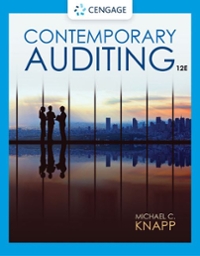

This a multiple question: " Ms. Alumn is the portfolio manager for a large insurance company. She is considering investing $1 million to purchase the bonds of Patriot Enterprises, Inc. Can you please answer A, B, and C, please? Do not do question 5. I did question 5 already. The questions are pulled from the images. The second image is a footnote.
4. Ms. Alumm is the portfolio manager for a large insurance company. She is considering investing $1 million to purchase the bonds of Patriot Enterprises, Inc. [A] All of Patriot's bonds have market prices that imply a yield to maturity of 8% "bond equivalent yield" (that is, 4% every 6-month period).1 Each Patriot bond is described here, based on a $1,000 face value (par value), which is the promised payment at maturity. 0 Bond A has ve years until maturity and pays a 9% coupon yield ($45 every 6 months on a $1,000 face value bond). 0 Bond B has ten years until vmaturity, pays an 8% coupon yield ($40 semiannual payments), and is being offered in a private placement at par. 0 Bond C is a zero-coupon bond that pays no explicit interest, but will pay the face amount of $1,000 per bond at maturity in ten years. At what price should each bond sell currently? [B] Ms. Alumm realizes that in addition to determining the current prices of these bonds, she would also like to know how these prices might respond to changing interest rates once her company has purchased them. After purchasing the bonds at an 8% bond-equivalent yield, what would happen to the price of each band, and how much money would the company make if market yields on Patriot bonds fall to 6% .7. . . rise to 10%? [C] As an alternative, Ms. Alumm has been invited to invest $1 million in a private placement of a 10year Eurobond2 of a second rm, Nationaliste, S.A. Nationaliste bonds are similar in risk to "Bond B" above: they promise an 8% coupon yield for 10 years, but coupons are paid annually, not semiannually. The Nationaliste bonds are priced at a 1% discount from par, or $990 per $1,000 face value. What yield to maturity is implied by the Nationaliste Eurobond? Compare this yield to the 8% "bond equioalent yield" of the Patriot semiannual coupon bond (Bond 8) above. What should Ms. Alumm do? 1 Most domestic US bonds pay interest of half the coupon rate semiannually. The "bond-equivalent yield" to maturity is generally stated in terms of twice the semiannual yield, ignoring the compounding of the midyear coupon payment. Thus the eld-tomamty as commonly stated for semiannual bonds actually understates the true annual effective yield. For additional Mormaon, see pages 289-290, Brigham and Gapenski, Financial Management: Theory and Practice, 7th edition (1994), including the footnote on that page. 2 Please see the definition of Eurobond in Barron's Dictionary of Finance and Investment Terms. One key point is that Eurobonds generally pay annual coupon payments, as opposed to the semiannual convention for typical bonds. If you calculate the yield-tomaturity based on these annual payments, you will get an effective annual ratethis differs from the semiannualbased "bond-equivalent yield" that is the convention for bond yield quotes in the US










